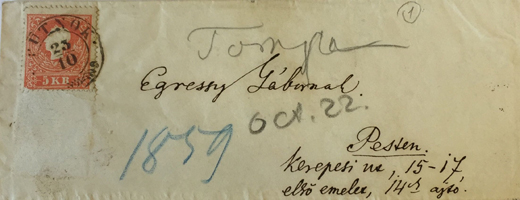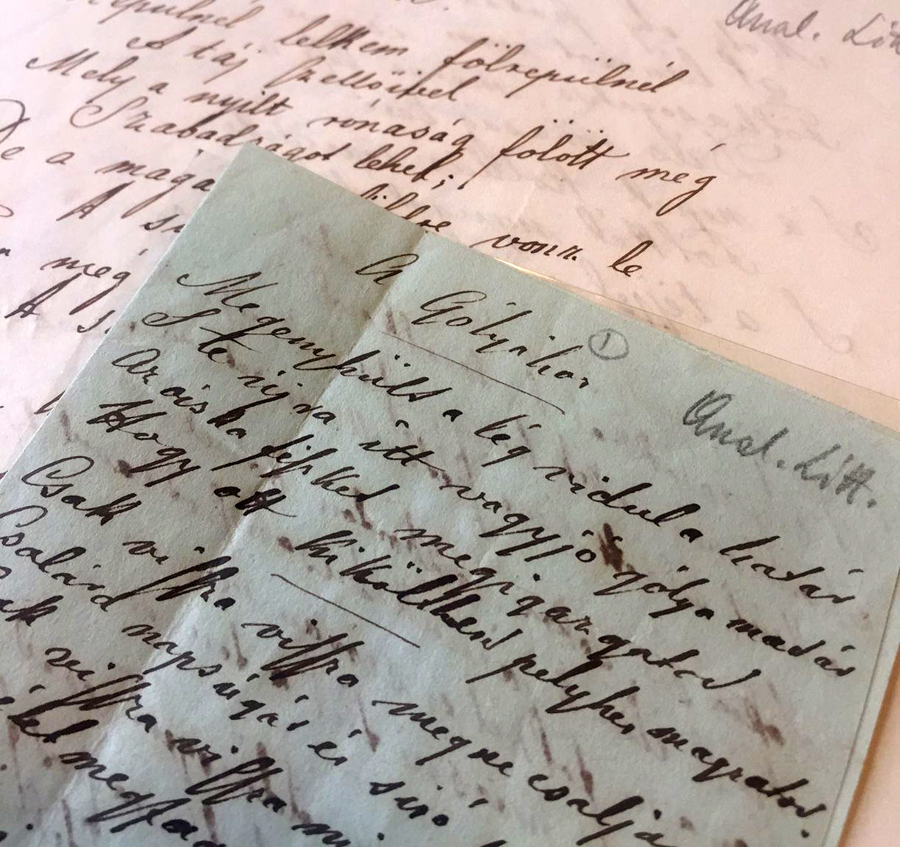
“The song may not have been forgotten” – Exhibition on the occasion of the 200th anniversary of Mihály Tompa's birth

Speaking of our exhibition, it is important to emphasize that certain especially beautiful or humorous items of the Manuscript Collection of NSZL have not yet been published. In addition to the most important letters written by Tompa to his contemporaries, we will present a silk-embossed illustrated album entitled Virágregék (Flower Legends), original photos taken of Tompa and his wife, and we will also relate what the poet had to do with a highly decorative album or Petőfi’s private life.
Some legends related to Tompa will be denied (often with his help), and we hope to create new legends about him.
Our exhibition will be further enriched with other related documents and relics (such as letters, paintings or Tompa’s legendary “Black Book”) lent by Petőfi Literary Museum, the Library of the Hungarian Academy of Sciences and the Reformed Parish of Sárbogárd.
Mihály Tompa’s acting as a poet was also part of the happenings which lent a special literary historical significance to the 1840s.
Tompa was highly popular among his contemporaries: both critics and the reading public received his works positively. At the start of his career, Athenaeum, one of the most respected journals of the era published his poems, and later they were published in Életképek, Honderü and Pesti Divatlap, journals which symbolized the new age. Representing the folk trend, Tompa was, at a time and in the beginning, even more popular than Sándor Petőfi. His real reputation among readers was due to his volume Népregék, népmondák (Folk Tales, Folk Legends) (1846) based on the adaptation of folk tales. Professional recognition was marked by his winning the special award of Kisfaludy Társaság (Kisfaludy Society) granted for Szuhay Mátyás (1847). Tompa’s poems related to the folk trend growing due to Petőfi’s appearance in the literary arena, and later those related to the Hungarian Revolution of 1848 and the subsequent period (A gólyához (To the Stork); A madár, fiaihoz (The Bird, to His Sons); Levél egy kibujdosott barátom után (Letter to a Friend Hiding Away)) let him keep his prestigious place among recognized authors.
In the meantime, Tompa chose the holy office in addition to literature, and he had a significant activity in the field of Protestant Church speeches. His published funeral speeches provide an interesting 19th-century historical portrait. Tompa’s volume entitled Olajág (Olive Branch) was a memento of the interlacement of his literary and ecclesiastical work.
Until the end of the 19th century, he was regarded as a classical author, and at the beginning of the 20th century, he was included in all the major comprehensive literary historical works, but later on, he was increasingly excluded from the canon. His name was maintained mainly by his poems related to the Hungarian Revolution of 1848, his friendship with János Arany and Sándor Petőfi, as well as by his correspondence with outstanding representatives of the age including, among others, József Bajza, Mór Jókai, Gusztáv Heckenast, Albert Pákh and Gábor Egressy.
Curators: literary historians Dr. Anikó Ágnes Patonai and Rita Szűts-Novák
Opening ceremony: May 23, 2017, 4 p.m., in the Ceremonial Hall on Floor 6, followed by a guided tour of the exhibition in the Catalog space on Floor 7
INVITATION CARD (in Hungarian)
The exhibition will be open on Floor 7 of the Library from May 23 until December 20, 2017, during the opening hours of NSZL. Visitors who are not registered readers of the Library can visit our temporary chamber exhibitions for a flat fee of HUF 400.




